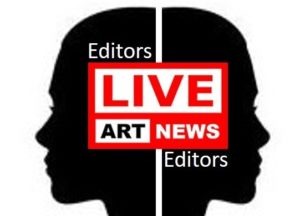Art Dubai (until 5 March) is always a momentous occasion in the local glitterati calendar, and this year is no exception. Returning to the luxury Madinat Jumeirah hotel with an even bigger edition than last year—130 exhibitors compared to 100—there was an upbeat vibe within the swelling crowds. But were they buying or just sipping free Ruinart? Dubai’s business is booming thanks to an influx of foreign—reportedly Russian—money and the dealers at the fair were optimistic that sales would reflect that.
The art fair focuses on art from the Global South—a term broadly denoting Latin America, Africa, Asia and Oceania, and which the fair’s commissioner for the talks programme Global Art Forum, Shumon Basar, points out was not readily accepted when the fair began using it ten years or so ago. This year it has increased participation from leading African and South Asian dealers and an expanded Art Dubai Digital section, which launched last year. “Art Dubai spotlights the Global South in a way that no other fair does,” says Nadine Abdel Ghaffar, the founder of Egyptian art company Art d’Egypte, who attended the VIP preview.
The ‘phygital’ comes of age
Last year when Art Dubai opened its inaugural digital section at the fair it was peak NFT season. Just one year later, cryptocurrency has crashed and online trading of NFTs has plunged. This year’s Art Dubai Digital has accordingly pivoted. “The sector is undergoing growing pains,” says Art Dubai’s executive director Benedetta Ghione. She says that it is meant to capture “a snapshot of the moment” in the digital art sector and that this means the latest edition includes fewer NFTs and less “hype”. What is overtly present this year is an abundance of works that use artificial intelligence (AI), the newest digital buzzword. “While AI has been here for decades, it feels as if it arrived a week ago,” quipped Basar at the press conference.
It appeared that the so-called ‘Crypto Winter’ may be thawing in sunny Dubai, promising a possible ‘Crypto Spring’.
The section—that has 22 exhibitors compared to 17 in 2022, four of which are returning organisations, and is located in a separate building from the rest of the galleries—feels more curated this year and more alive to art historical context, tackling the impression that digital art is brand new. The fair uses the word ‘phygital’—a combination of physical and digital—to describe this hybrid approach, and this year the section certainly had more emphasis on the ‘phy’.
The gallery Gazelli.io is showing a series of AI works by the artist Brendan Dawes, who has been working digitally for the past 30 years, and Unit London gallery are showing colourful geometric works by artists including Zach Lieberman and Fingacode that reflect the legacy of Op Art. This framing is in part the work of the curator of the section Clara Che Wei Peh, a Singapore-based writer and curator specialising in NFTs and digital art, particularly of the Global South. Sales in the digital section seemed much stronger on the VIP days this year—it appeared that the so-called ‘Crypto Winter’ may be thawing in sunny Dubai, promising a possible ‘Crypto Spring’.




